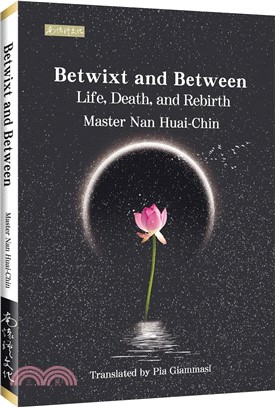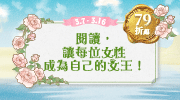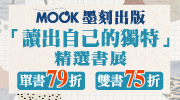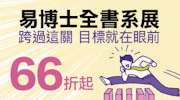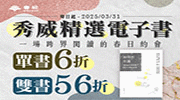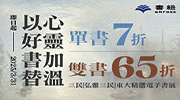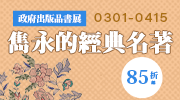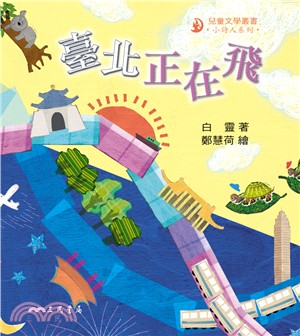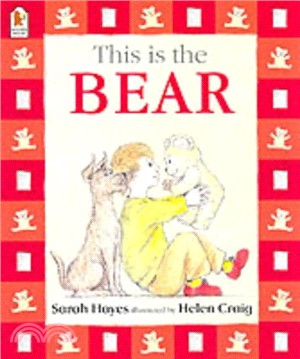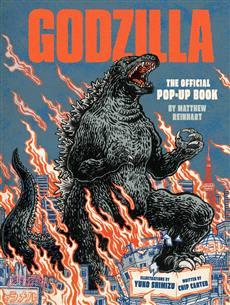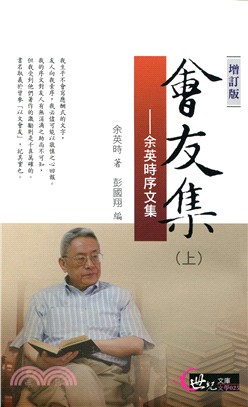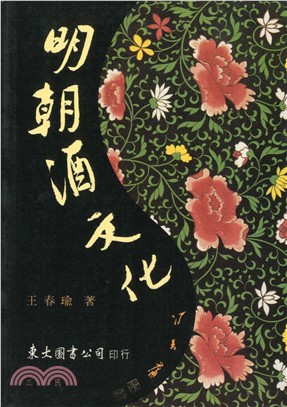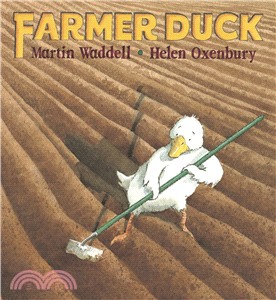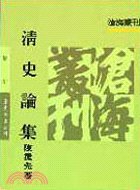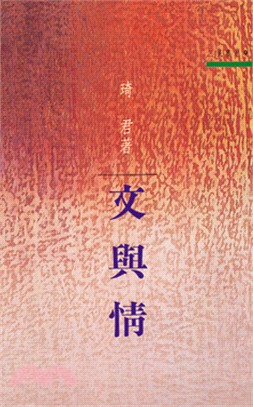Betwixt and Between: Life, Death, and Rebirth
商品資訊
ISBN13:9789860613094
出版社:南懷瑾文化
作者:南懷瑾(Master Nan Huai-Chin)講述
譯者:PIA GIAMMASI譯
出版日:2023/09/01
裝訂/頁數:平裝/216頁
規格:21cm*14.8cm*1cm (高/寬/厚)
重量:600克
版次:1
商品簡介
作者簡介
序
目次
書摘/試閱
相關商品
商品簡介
《Betwixt and Between: Life, Death, and Rebirth》is a record of Master Nan’s talks in which he answered questions about the process of death and rebirth. Master Nan weaves together personal anecdotes, scientific knowledge, Buddhist teachings from the Pali Canon, Mahayana sutras, Yogacara, Vijnanavada, and Chan in such an intricate way that those who are curious about the Buddhist perspective on life and death, those familiar with Buddhist teachings, and those who are deep into cultivation will all gain new insights and answers. For its depth, this book is very engaging and hard to put down. Any reader will find it to be a treasure trove and will want to come back to it again and again.
◎代理經銷:白象文化
更多精彩內容請見
http://www.pressstore.com.tw/freereading/9789860613094.pdf
◎代理經銷:白象文化
更多精彩內容請見
http://www.pressstore.com.tw/freereading/9789860613094.pdf
作者簡介
Master Nan is considered one of the greatest contemporary spiritual Masters. Born in China in 1918, Master Nan's profound understanding of the Dharma was verified by several Chan and esoteric Buddhist Masters. He is considered a foremost expert in Buddhism, Taoism, Confucianism, Chinese philosophy, history and other aspects of Chinese culture. He is the author of over 80 books that have sold over a billion copies in Chinese-speaking countries.
Everything changed when Pia Giammasi met Master Nan in Hong Kong in 1988. Her world turned upside-down, inside out, and expanded exponentially by being enveloped into the enlightened reality of Master Nan. Pia had the privilege of doing oral translation for Master Nan for nearly 30 years and is currently working on written translations of his books.
Everything changed when Pia Giammasi met Master Nan in Hong Kong in 1988. Her world turned upside-down, inside out, and expanded exponentially by being enveloped into the enlightened reality of Master Nan. Pia had the privilege of doing oral translation for Master Nan for nearly 30 years and is currently working on written translations of his books.
序
Translator’s Forward
This book is a record of Master Nan’s talks in which he answered questions about death and rebirth. In themodern world, both death and birth, more often than not, take place in a hospital rather than at home and so many people have not witnessed another human being entering or leaving this world. Many times our loved ones go through thesemonumental passages with only medical staff present. It is only through an understanding of what goes on during the transitions of death and rebirth that we can help others in the best way possible and prepare themor ourselves well for having children or to face death.
In secular terms, life is confined to the time between birth and death. Death is seen as the end of life, as if it were not part of life. Therefore it is feared, it is sanitized and hidden away, almost swept under the carpet. Master Nan laments how death and dying are treated in the modern age. When dying is recognized as just a phase of life, it is not so formidable. A person is considered dead when the heart stops beating and the brain waves go flat, but actually the process of dying begins long before thatmoment and continues on afterwards for quite some time. Master Nan guides us through the internal phenomena and processes of dying, from the earliest signs of the dissipation of the elements, to the point of clinical death, until the point when the consciousness leaves the body, which can take up to eight hours. With a better understanding of what is happening internally, we can more appropriately and respectfully care for the dying person.
Master Nan goes on to discuss fromhistorical and cultural perspectives, the interesting customs, traditions, and superstitions in regards to funerals and burials, including earth, water, fire, wind, and sky burials. From this wider vantage point, ideas of right and wrong, good and bad, etc. can drop away leaving behind all of the unnecessary worry, effort, judgment, blame, guilt, obsessions, sanctimoniousness, and so on that can complicate or mar family relationships while making arrangements for the deceased.
Birth, death, funerals, and burials all happen within our world. We can see, hear, feel and know―to a certain extent―what is going on. However, in regards to what happens between death and rebirth, this is outside of the scope of human experience, and yet still imperceptibly overlapping. It is only those with deep spiritual attainment who can give us a glimpse into that realm. Within the various schools of Buddhism, one can find teachings on birth, death, the intermediate state, and reincarnation into various life forms. Those engaged in more scholarly study of Buddhism may be familiar with Abhidharmakośabhāṣya, Yogacarabhumi Sastra, or Chinese Mahayana sutras describing the intricate details of these phases and processes. In general,Western Buddhists learn about the intermediate or bardo state from teachings on the book, Bardo Thodol, better known by the name given to its first translation, the Tibetan Book of the Dead. Master Nan talks about the intermediate state from first hand spiritual knowledge giving a unique window into the intermediate state of existence just ever so slightly outside of our range of perception.
Buddha’s teachings on pregnancy and birth are not commonly known. The Buddha gave detailed descriptions of human birth starting from conception, outlining all of the changes that take place week by week over the nine to ten months of pregnancy. Since these ancient Buddhist sutras written in terse classical Chinese can be very difficult to understand, most people are not familiar with them. Master Nan makes these teachings accessible and correlates them with modern terminology and knowledge.
Through an incredible mixture of personal stories, deep meditative insight, history, science, and Buddhist teachings from the Pali Canon, Mahayana sutras, Yogacara, Vijnanavada, and Chan, Master Nan guides the reader through death, the intermediate state, and rebirth into the human realm.
This book is a record of Master Nan’s talks in which he answered questions about death and rebirth. In themodern world, both death and birth, more often than not, take place in a hospital rather than at home and so many people have not witnessed another human being entering or leaving this world. Many times our loved ones go through thesemonumental passages with only medical staff present. It is only through an understanding of what goes on during the transitions of death and rebirth that we can help others in the best way possible and prepare themor ourselves well for having children or to face death.
In secular terms, life is confined to the time between birth and death. Death is seen as the end of life, as if it were not part of life. Therefore it is feared, it is sanitized and hidden away, almost swept under the carpet. Master Nan laments how death and dying are treated in the modern age. When dying is recognized as just a phase of life, it is not so formidable. A person is considered dead when the heart stops beating and the brain waves go flat, but actually the process of dying begins long before thatmoment and continues on afterwards for quite some time. Master Nan guides us through the internal phenomena and processes of dying, from the earliest signs of the dissipation of the elements, to the point of clinical death, until the point when the consciousness leaves the body, which can take up to eight hours. With a better understanding of what is happening internally, we can more appropriately and respectfully care for the dying person.
Master Nan goes on to discuss fromhistorical and cultural perspectives, the interesting customs, traditions, and superstitions in regards to funerals and burials, including earth, water, fire, wind, and sky burials. From this wider vantage point, ideas of right and wrong, good and bad, etc. can drop away leaving behind all of the unnecessary worry, effort, judgment, blame, guilt, obsessions, sanctimoniousness, and so on that can complicate or mar family relationships while making arrangements for the deceased.
Birth, death, funerals, and burials all happen within our world. We can see, hear, feel and know―to a certain extent―what is going on. However, in regards to what happens between death and rebirth, this is outside of the scope of human experience, and yet still imperceptibly overlapping. It is only those with deep spiritual attainment who can give us a glimpse into that realm. Within the various schools of Buddhism, one can find teachings on birth, death, the intermediate state, and reincarnation into various life forms. Those engaged in more scholarly study of Buddhism may be familiar with Abhidharmakośabhāṣya, Yogacarabhumi Sastra, or Chinese Mahayana sutras describing the intricate details of these phases and processes. In general,Western Buddhists learn about the intermediate or bardo state from teachings on the book, Bardo Thodol, better known by the name given to its first translation, the Tibetan Book of the Dead. Master Nan talks about the intermediate state from first hand spiritual knowledge giving a unique window into the intermediate state of existence just ever so slightly outside of our range of perception.
Buddha’s teachings on pregnancy and birth are not commonly known. The Buddha gave detailed descriptions of human birth starting from conception, outlining all of the changes that take place week by week over the nine to ten months of pregnancy. Since these ancient Buddhist sutras written in terse classical Chinese can be very difficult to understand, most people are not familiar with them. Master Nan makes these teachings accessible and correlates them with modern terminology and knowledge.
Through an incredible mixture of personal stories, deep meditative insight, history, science, and Buddhist teachings from the Pali Canon, Mahayana sutras, Yogacara, Vijnanavada, and Chan, Master Nan guides the reader through death, the intermediate state, and rebirth into the human realm.
目次
Publisher’s note [Chinese version]
Translator’s Forward
Acknowledgements
Session One
● Temple in New York
● Eastern Esoteric Buddhism, Tibetan Buddhism, and Bon
● The monk from the army, Ven. Xianming
● Before and after life
● The scientific nature of cause and effect
● Life and death through change vs. life and death in sections
● We are all “transformation bodies”
● What is enlightenment and Buddhahood?
● Changing and unchanging
● Fourmain principles
Session Two
● “Passing away in one’s own bed”
● The end of life in different time periods
● People who pass away without illness
● Material and spiritual life
● Changes in the Four Great Elements before death
● Signs of the direction of reincarnation
● Five types of no-consciousness
Session Three
● Questions concerning cremation
● Popular ideas of burial feng shui
● Types of burials
● The relationship between the element of wind and “warmth, lifeforce and consciousness”
● Are you old?
● Dissolution of the Four Great Elements
● How to practice Buddha mindfulness
● How fast is thought?
● Brightness of the newly arisen bardo body
● Like a dream with supernatural powers
● Habit energy and reincarnation
Session Four
● Dying verses coma
● A young girl’s out-of-body experience
● Sleepwalking
● Why is it that spiritual practice can give rise to supernatural powers?
● Shadow consciousness, Yin-spirit and yang-spirit
● Wang Yangming’s story
Session Five
● Hun-soul and Po
● The volition and thought skandhas of a bardo person
● The phenomenon of multiple rebirths within the bardo
● Three dreams
● What exactly is dependent origination?
● Equal flow and different ripening of life
● Chan, Esoteric and Fundamental Nature Buddhist schools
● Poshan-haiming’s story
● Namarupa, three-in-one
● Ten “all entrances”
Session Six
● The twelve sufferings within life
● Striving toward no suffering
● Where is the Dharmakaya
● How is a fetus formed
● The whirling of habit energy
● Growth of a baby in the womb
● The realm of a baby in the womb
● The retribution for suicide
● Entering, living in, and exiting the womb consciously
● Heavenly realms
● Transforming the Four Great Elements through the element of wind
Translator’s Forward
Acknowledgements
Session One
● Temple in New York
● Eastern Esoteric Buddhism, Tibetan Buddhism, and Bon
● The monk from the army, Ven. Xianming
● Before and after life
● The scientific nature of cause and effect
● Life and death through change vs. life and death in sections
● We are all “transformation bodies”
● What is enlightenment and Buddhahood?
● Changing and unchanging
● Fourmain principles
Session Two
● “Passing away in one’s own bed”
● The end of life in different time periods
● People who pass away without illness
● Material and spiritual life
● Changes in the Four Great Elements before death
● Signs of the direction of reincarnation
● Five types of no-consciousness
Session Three
● Questions concerning cremation
● Popular ideas of burial feng shui
● Types of burials
● The relationship between the element of wind and “warmth, lifeforce and consciousness”
● Are you old?
● Dissolution of the Four Great Elements
● How to practice Buddha mindfulness
● How fast is thought?
● Brightness of the newly arisen bardo body
● Like a dream with supernatural powers
● Habit energy and reincarnation
Session Four
● Dying verses coma
● A young girl’s out-of-body experience
● Sleepwalking
● Why is it that spiritual practice can give rise to supernatural powers?
● Shadow consciousness, Yin-spirit and yang-spirit
● Wang Yangming’s story
Session Five
● Hun-soul and Po
● The volition and thought skandhas of a bardo person
● The phenomenon of multiple rebirths within the bardo
● Three dreams
● What exactly is dependent origination?
● Equal flow and different ripening of life
● Chan, Esoteric and Fundamental Nature Buddhist schools
● Poshan-haiming’s story
● Namarupa, three-in-one
● Ten “all entrances”
Session Six
● The twelve sufferings within life
● Striving toward no suffering
● Where is the Dharmakaya
● How is a fetus formed
● The whirling of habit energy
● Growth of a baby in the womb
● The realm of a baby in the womb
● The retribution for suicide
● Entering, living in, and exiting the womb consciously
● Heavenly realms
● Transforming the Four Great Elements through the element of wind
書摘/試閱
So why is it called bardo (lit. middle yin)? Just now I said that in Chinese, this is also justified. Everything is relative. On one side, there is the obviously visible and tangible, called yang; on the other is the invisible and intangible called yin. Therefore, the middle existence is also called the “middle yin” or bardo, which we commonly call “ling-hun, 靈魂,” the spirit-hun or soul. For example, in Xu's account earlier, the ‘soul’ went out, he felt ‘something’ go out. Because he is Chinese, his thinking is affected by education and concepts and he calls this ‘something’, ling-hun, which is also a hypothetical name. This is what it is commonly called in Chinese, but not in Buddhist culture. The so-called linghun is very sensitive, knows almost everything, knows everything, has feelings, and has perception, but he is not a physical thing.
In regards to the source of Chinese characters for ling-hun, 靈魂, the character for hun, 魂, is made up of the character for "ghost"鬼next to the character for "cloud"云. Ghosts are within the yin realm and are invisible whereas gods are in the yang realm and are visible. If we study these two characters carefully, both ghost 鬼and god 神are both related to land, to cultivated fields 田specifically. Within the character for ghost, the field has lines that extend down into the ground representing the yin aspect of electrical current going down into the ground. On the top, there is one hair-like stroke representing the hairs on your head standing up. This is the composition of the character for the word ghost 鬼. In the character for the word god 神, in the middle of the right side is the field. On the left side is "shi," 示 meaning reveal or manifest, which belongs to the heavens. Above and below the field are lines of extension that become "shen"申. This is the composition of the character for the word "god." When you add a line going upward from the character "tian" 田, which represents the land, it is called "you" 由which means budding―things are starting to grow up toward the light in the field. If there are lines going both upward and downward from the field, this is the base of the character for the word "shen" 申, stretch or reach―reaching all directions, everywhere above and below. Add the character for reveal/manifest next to this, what the heavens manifest or reveal is called god 神.
On the right side of the character for hun, 魂, is the character for ghost [which contains the character for cloud on the lower right hand side]. If ghosts are connected downward but not upward, why add a cloud? This is the abbreviated character of cloud. One could say, they are just like clouds and mist, which seem to exist and seem to be nothing. They are blurry and vague so they are called hun.
There is a difference between hun 魂and po 魄. The “po" is material and physical. We have physical energy, qi. Just like in the north when we breathe in cold air, we breathe out white breath. Po are substantive, are material; hun do not have substance. They are invisible, and nebulous like clouds. Hun-po 魂魄are two different things. When a person gets a fright, in literature this is described as "the hun has flown and the po have scattered." The hun flies out, the spirit of consciousness has left the body. As well, the body, the po, are frightened; the person pees their pants and trembles. It is the function of the physical body. The four great elements are in discord, and have somewhat separated. This is what is called "the hun has flown and the po have scattered."
So, if you look at ancient Chinese characters, every character has its scientific reasoning. Advocating simplified characters has created a big mess.
以上內容節錄自《Betwixt and Between: Life, Death, and Rebirth》南懷瑾(Master Nan Huai-Chin)講述;Pia Giammasi 譯‧南懷瑾文化事業有限公司出版/白象文化代理經銷
更多精彩內容請見
http://www.pressstore.com.tw/freereading/9789860613094.pdf
In regards to the source of Chinese characters for ling-hun, 靈魂, the character for hun, 魂, is made up of the character for "ghost"鬼next to the character for "cloud"云. Ghosts are within the yin realm and are invisible whereas gods are in the yang realm and are visible. If we study these two characters carefully, both ghost 鬼and god 神are both related to land, to cultivated fields 田specifically. Within the character for ghost, the field has lines that extend down into the ground representing the yin aspect of electrical current going down into the ground. On the top, there is one hair-like stroke representing the hairs on your head standing up. This is the composition of the character for the word ghost 鬼. In the character for the word god 神, in the middle of the right side is the field. On the left side is "shi," 示 meaning reveal or manifest, which belongs to the heavens. Above and below the field are lines of extension that become "shen"申. This is the composition of the character for the word "god." When you add a line going upward from the character "tian" 田, which represents the land, it is called "you" 由which means budding―things are starting to grow up toward the light in the field. If there are lines going both upward and downward from the field, this is the base of the character for the word "shen" 申, stretch or reach―reaching all directions, everywhere above and below. Add the character for reveal/manifest next to this, what the heavens manifest or reveal is called god 神.
On the right side of the character for hun, 魂, is the character for ghost [which contains the character for cloud on the lower right hand side]. If ghosts are connected downward but not upward, why add a cloud? This is the abbreviated character of cloud. One could say, they are just like clouds and mist, which seem to exist and seem to be nothing. They are blurry and vague so they are called hun.
There is a difference between hun 魂and po 魄. The “po" is material and physical. We have physical energy, qi. Just like in the north when we breathe in cold air, we breathe out white breath. Po are substantive, are material; hun do not have substance. They are invisible, and nebulous like clouds. Hun-po 魂魄are two different things. When a person gets a fright, in literature this is described as "the hun has flown and the po have scattered." The hun flies out, the spirit of consciousness has left the body. As well, the body, the po, are frightened; the person pees their pants and trembles. It is the function of the physical body. The four great elements are in discord, and have somewhat separated. This is what is called "the hun has flown and the po have scattered."
So, if you look at ancient Chinese characters, every character has its scientific reasoning. Advocating simplified characters has created a big mess.
以上內容節錄自《Betwixt and Between: Life, Death, and Rebirth》南懷瑾(Master Nan Huai-Chin)講述;Pia Giammasi 譯‧南懷瑾文化事業有限公司出版/白象文化代理經銷
更多精彩內容請見
http://www.pressstore.com.tw/freereading/9789860613094.pdf
主題書展
更多
主題書展
更多書展今日66折
您曾經瀏覽過的商品
購物須知
為了保護您的權益,「三民網路書店」提供會員七日商品鑑賞期(收到商品為起始日)。
若要辦理退貨,請在商品鑑賞期內寄回,且商品必須是全新狀態與完整包裝(商品、附件、發票、隨貨贈品等)否則恕不接受退貨。



